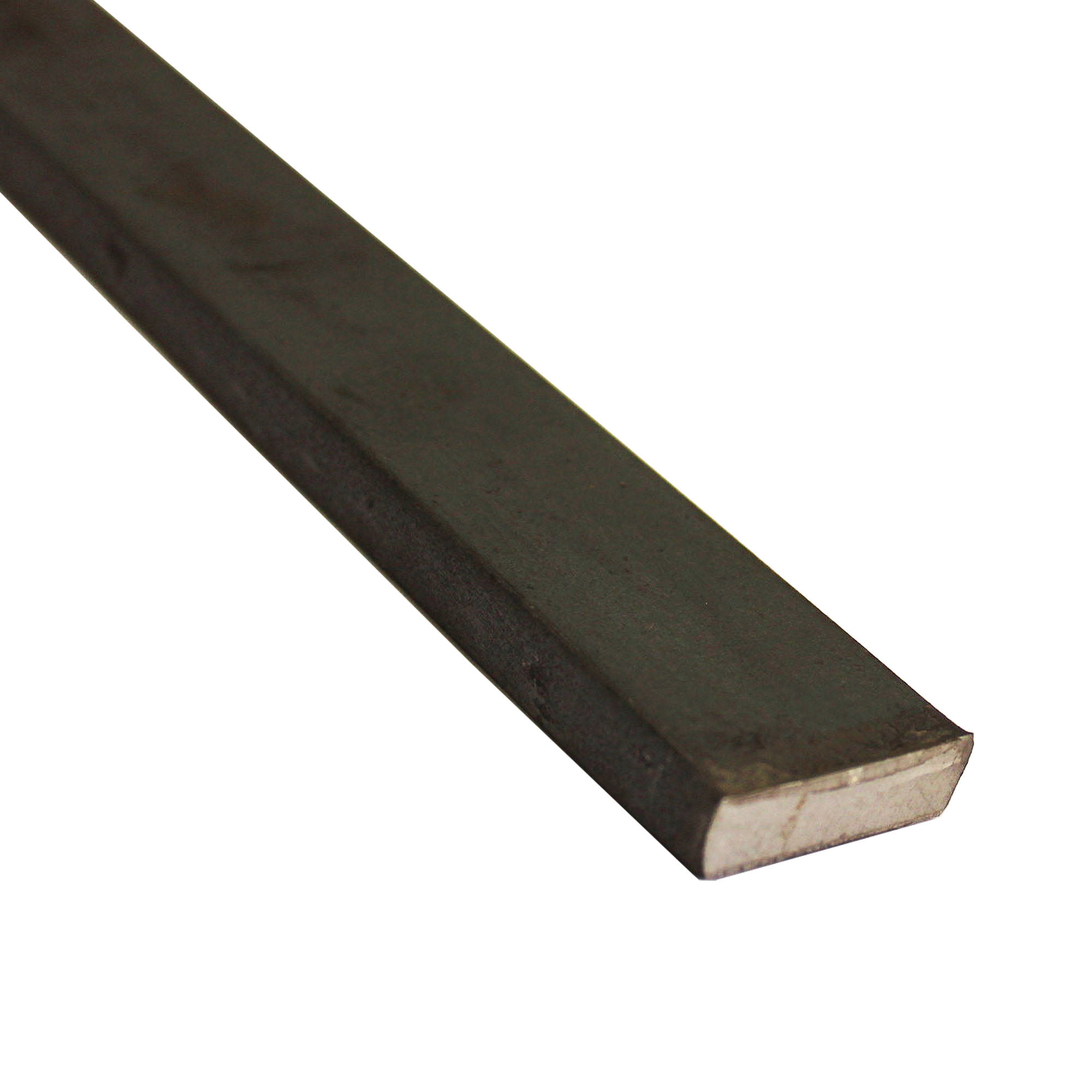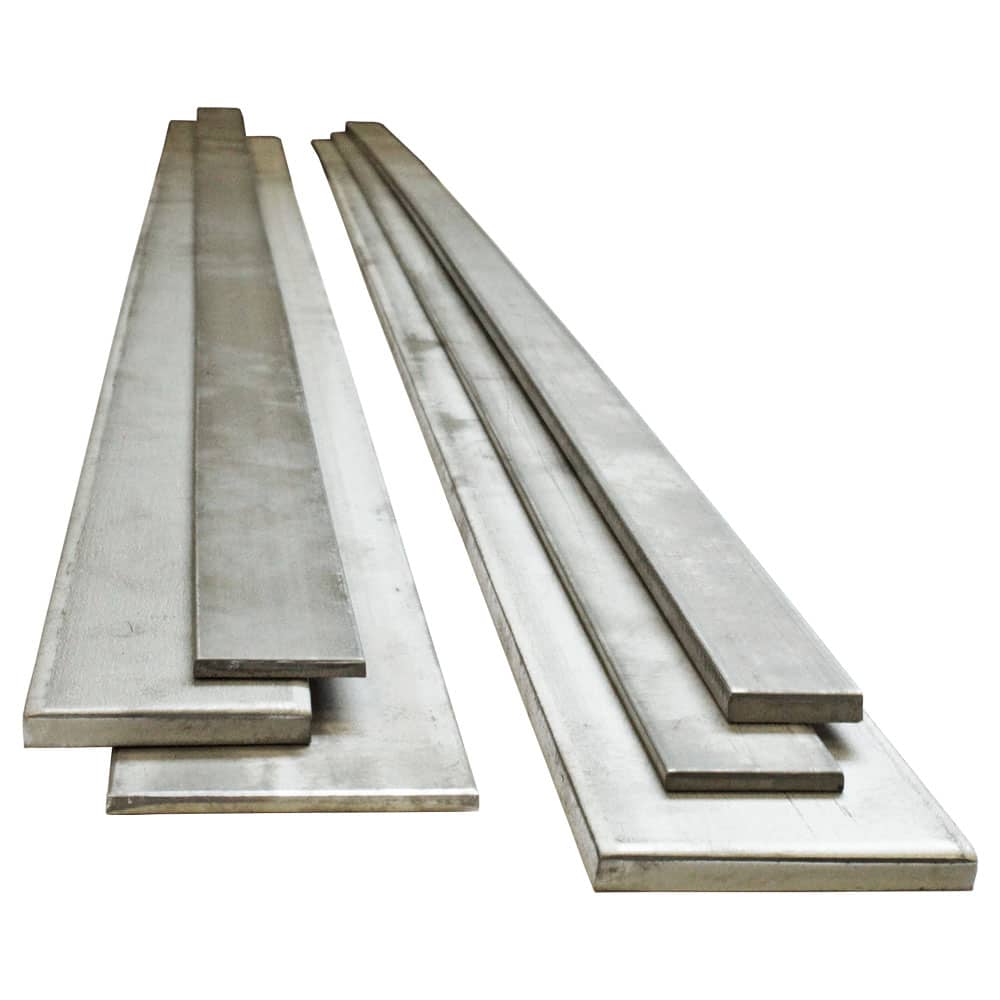- Massive Range
- FREE UK Delivery
- Rapid Dispatch
- Massive Range
- FREE UK Delivery
- Rapid Dispatch
- Massive Range
- FREE UK Delivery
- Rapid Dispatch
£10.99 – £21.99 inc VAT


This website is secured:
✔ Specialists In Rapid Shipments Of Any Size
✔ FREE UK Delivery Included
✔ Immediate Express Dispatch From Stock
✔ Tracked Delivery with Order Updates
✔ 30-Day Returns Accepted
£ Check Out Our Clearance Listing For Savings
@ ☏ Bespoke Sizes & Larger Sheets Available
Looking for a durable and versatile option that can withstand pretty much anything you throw at it? Look no further than the stainless flat bar by Speciality Metals. With a generous 20mm width and 5mm thick, this metal strip comes in various lengths and is highly resistant to corrosion, weather, chemicals and heat. Plus, its malleable nature makes it easy to work with and adapt to your specific needs. And if that weren’t enough, it also boasts superior hygienic properties. So whether you’re looking for a heavy-duty material for industrial use or a sleek and modern finish for your home, the stainless flat bar has got you covered.

Top quality metal stainless flat bar strip supplied straight from Warrington, UK. As the name suggests, stainless steel flat bar is essentially pre-fabricated stainless steel strips.
There are dozens of widths and thicknesses of Stainless Steel Strips available from 20mm x 3mm thick up to 50mm x 6mm thick.
Speciality Metals offers high-quality stainless flat bars that are durable, versatile and corrosion-resistant. Made from 304 metal stainless, these flat bars are also resistant to weather, chemicals and heat, making them ideal for a wide range of applications. With a thickness of 5mm and a width of 20mm, these flat bars come in various lengths and are malleable, making them easy to work with. In addition to their strength and resilience, these flat bars also have hygienic properties, making them suitable for use in medical and food processing environments. Order your stainless flat bar strip from Speciality Metals today to experience the unparalleled quality and durability of our products.
These are the available options from stock:
Speciality Metals is known to be the United Kingdom’s best up-and-coming small-quantity metal company.
Furthermore we stock a vast range of stainless steel sections that compliment our mesh range perfectly.
Over 50,000 customers of Specialty Metals are provided with fast, friendly customer service every year. We’re the place to try when you need metal of any shape and size. We’re based in Warrington, UK.
We pride ourselves on our rapid turnaround and a large range of options.
We are developing our online offers to give more customers access to the best metals and mesh available in the UK.
Our mission is to be the UK’s go-to supplier for small-quantity metal requests. With an ever-growing range of products, we provide you with high quality materials, outstanding customer service and fast delivery times. Our experienced staff
We also carry a wide range of mild steel sheet metal, angle iron and round tube.
Yes, it is possible to polish 304 stainless steel flat bars.
304 stainless steel, like other stainless steel grades, can be polished to achieve various surface finishes, ranging from a standard mill finish to a mirror-like shine. Polishing not only enhances the aesthetic appeal of the steel but can also improve its corrosion resistance by smoothing out microscopic roughness that might harbor corrosive agents.
There are several methods and steps involved in polishing stainless steel:
Abrasive Polishing: This involves using progressively finer grits of abrasive materials, such as sandpaper or specialised polishing compounds, to smooth out the surface. The steel is typically moved through a series of belts or wheels with increasing fineness.
Buffing: Once the desired level of smoothness is achieved through abrasive polishing, buffing can be done to achieve a high gloss or mirror finish. Buffing involves using cloth wheels and polishing compounds.
Electropolishing: This is an electrochemical process that removes a thin layer from the surface of the steel, resulting in a smooth and shiny finish. Electropolishing can be particularly effective in enhancing corrosion resistance, as it removes any embedded contaminants and iron from the surface, leaving behind a chromium-rich layer.
Passivation: After polishing, it might be beneficial to passivate the stainless steel. This process uses an acid solution to remove any free iron or contaminants from the surface, ensuring that the natural, protective chromium oxide layer is uninterrupted.
Maintenance: Polished stainless steel can be prone to fingerprints and smudges. To maintain its shine, regular cleaning with a soft cloth and a mild detergent or specialised stainless steel cleaner is recommended.
Yes, you can paint or coat 304 stainless steel flat bars, but there are essential considerations to ensure proper adhesion and longevity of the paint or coating. 304 stainless steel is known for its corrosion resistance, and one of its protective mechanisms is the formation of a thin, passive oxide layer on its surface. While this layer provides protection, it can also hinder the adhesion of paints and coatings.
To paint or coat 304 stainless steel effectively:
Surface Preparation: Proper surface preparation is critical. The surface must be thoroughly cleaned to remove any oils, greases or contaminants. Common methods include using solvents or degreasing agents.
Abrasion: Even after cleaning, the naturally smooth and non-porous surface of stainless steel may not provide the best adhesion for paint. Lightly sanding or abrasive blasting the surface can create a rougher texture, increasing the mechanical bond between the paint and the steel.
Primers: It’s advisable to use a primer specifically designed for stainless steel. These primers can chemically bond to the stainless steel, providing a secure base layer for the topcoat. Epoxy primers or those containing zinc phosphate are often recommended for stainless steel.
Paint Selection: Choose a paint that is compatible with the primer and suitable for the intended application. It’s essential to ensure that the paint can withstand any environmental conditions the steel might be exposed to, such as UV radiation, moisture or chemicals.
Maintenance: While the paint can protect the stainless steel and offer aesthetic appeal, it might require periodic maintenance, especially in harsh environments. Regular inspections and touch-ups can extend the life of the paint and maintain the appearance of the steel.
While 304 stainless steel is renowned for its versatility and general corrosion resistance, there are certain environments where it might not be the ideal choice. Coastal areas with a high salt content can threaten 304 stainless steel due to the aggressive nature of chloride ions, which can lead to pitting and crevice corrosion. Similarly, environments with a high concentration of chlorine, such as around swimming pools, can also challenge the steel’s protective oxide layer. Prolonged exposure to temperatures above 870°C (1600°F) might induce sensitisation, increasing the risk of intergranular corrosion. Additionally, strong inorganic acids like hydrochloric or sulfuric acid can rapidly degrade its protective layer. Low oxygen settings can hinder the steel’s ability to form its protective oxide barrier, while sulfide-rich environments can induce sulfide stress cracking. In many of these challenging situations, a higher-grade stainless steel, like 316, with its enhanced corrosion resistance, might be a more fitting choice.
Check out our recent article ‘Stainless Steel Flat Bar: The Versatile Metal Strip You Need To Know’ for a deeper dive into steel metal strip. Our goal for our blogs and help guides is to answer as many questions as possible to help to explain the possibilities of mesh to our customers.
We are also very proud of our ever expanding YouTube channel.
Contact us today if you have any questions at all. We are always really keen to help in any way that we can.
We are also very proud of our highly popular eBay store, check us out there too.
Thank you for checking out our product.
£10.99 – £19.99 inc VAT
£11.99 – £34.99 inc VAT

£10.99 – £19.99 inc VAT

£11.99 – £34.99 inc VAT
Speciality Metals
Unit 1, Farrell Street, Warrington,
Cheshire, WA1 2WW, United Kingdom
Quick Links
Payment Options
